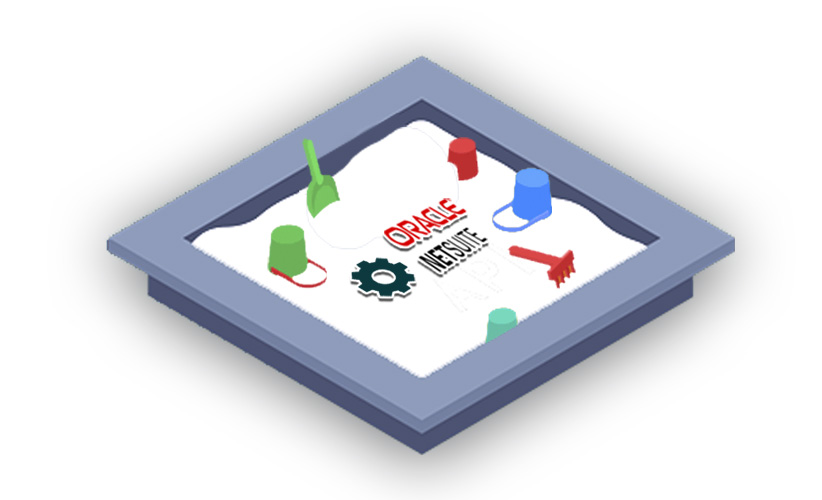Last Modified: February 9th, 2023
5 min read

NetSuite sandbox is a development environment that allows developers to test changes before they go live. This can be very helpful for large businesses like yours because it lets you try new things without risking the success of your business. We’ll discuss how this NetSuite sandbox works and why businesses should have one in this blog post.
What does Sandbox (or Sandbox Environment) mean in software development?
A sandbox is a secure, protective environment for users to experiment with applications and files without disturbing the system or platform they are running on. This testing space allows you to have complete control over your development process and ensures that any modifications don’t affect other areas of your business. In Software development, it is standard practice for developers to use sandboxes to test new programming code before implementing it live to prevent business disruptions. Cybersecurity professionals use sandboxes to test potentially malicious software to test vulnerabilities without compromising live data.
In software and web development sandboxes are also used to safely execute malicious code to avoid harming the device on which the code is running, the network, or other connected devices. A sandbox is the perfect supplement for keeping your system safe from malevolent forces, including those that employ zero-day exploits and stealthy attacks. Utilizing a sandbox allows you to add yet another layer of protection against these malicious threats.
What is NetSuite Sandbox?
Developing teams must consistently be able to experiment with new functionality in a production-like environment while also ensuring that company data is safe and secure. To achieve this, extra care should be taken throughout the process.
With this in mind, NetSuite has developed a product named “NetSuite Sandbox” which helps facilitate developers who wish to test changes and functionality on their own systems before deploying them into a live environment. The sandbox account is a copy of your live production account, including all customizations and data from a specific date; however, it does not process any external transactions like payments or email campaigns. The data can be refreshed from the production account on-demand. As a product offering, NetSuite offers two types of Sandbox accounts.
If you’re a customer or consultant building customizations with SuiteScript or SuiteFlow, then purchasing a single sandbox account is the best choice. But for larger and more complex projects such as building several large SuiteScript applications in parallel, it is advisable to get multiple sandboxes for better efficiency. This way, software developers can work on each case or dataset or customization exclusively and simultaneously.
How does NetSuite Sandbox work?
Through the NetSuite SuiteCloud Development Framework (SDF) businesses can directly deploy code from SuiteCloud IDE to development, sandbox, and production accounts. NetSuite sandbox can be enabled to mirror a live or production environment. Utilizing an external developer permits the development of apps that take advantage of web services from a secure sandbox, without unveiling sensitive data to third-party developers. This method allows developers to verify their code before migrating it into the production environment, granting peace of mind.
Two (2) types of testing environments in NetSuite:
NetSuite Development Account
Development accounts have the same features as your company’s production account and also NetSuite-provisioned SuiteApps. Nevertheless, this does not embrace any production information or account settings. You can fill the account with the data necessary for development and testing goals. By leveraging a development account, you will be able to permit external partners to develop something for your company without them having access to sensitive corporate data.
NetSuite Sandbox Account
Standard sandbox accounts are ideal for end-to-end testing and have a lower traffic level than regular production accounts. But if you need higher performance levels or substantial amounts of data, then NetSuite offers premium sandboxes to simulate the behavior of your production account at maximum speed. With our premium accounts, extensive automated performance tests are enabled. As against standard sandbox, the premium offering replicates your organization’s configuration, customization, and data. At your own convenience, you can renew customer data within the premium sandbox.
NetSuite Sandbox VS NetSuite Development Account
It’s essential to remember that any actions taken within development accounts, such as form customizations, record deletions and transaction entries, will not carry over to the NetSuite production account. Additionally, unlike sandbox or Release Preview Accounts where you can restrict external access by configuring email delivery settings; emails sent from a development account are simply delivered directly to the user logged in at that time. Furthermore, your NetSuite Development Account is never refreshed unlike a sandbox account, so you can rest assured that any work in progress will stay safe from being overwritten.
Tip: To make it simpler to recognize between development accounts, administrators can alter the name of individual accounts at Setup > Company > Company Information. These modifications will not be reset as they would in sandbox accounts due to the fact that development accounts are never refreshed.
What are the advantages of creating multiple accounts for different projects?
Sandboxes allow teams to work on separate data and test various changes independently. For bigger, more complex projects, like building several huge SuiteScript applications in parallel, multiple sandboxes enable software developers to each work with a different dataset and evaluate their own modifications separately.
Additionally, developers can have different permissions in their respective sandboxes. For example, a sandbox for developing the user interface might give read-only access to the data model, while a sandbox for writing business logic might give full write access.
How much does NetSuite Sandbox cost?
A NetSuite Sandbox is cost-effective, coming in at 10% of your annual license subscription plus all modules and users purchased. For more robust testing capabilities, the premium version will run you 20%, following similar pricing calculations as its standard counterpart.
Benefits of Using NetSuite Sandbox
Taking advantage of a sandbox to try out software updates before they’re launched promises fewer issues arise during and after testing since the test environment is distinct from the production one. Hence, NetSuite Sandbox offers an array of benefits to its users- such as:
- Being able to avoid expensive application rewrites
- Being able to test customizations before deployment
- Being able to fix issues with existing customizations
- Being able to try out third-party integration features
- Being able to train employees on existing or new business practices.
- Being able to test transaction entries, record deletions, and form customizations.
- Being able to allow IT operations teams to optimize environments.
From our experience, we find it a “must” for every NetSuite account to have a sandbox environment.
Having a NetSuite Sandbox is very helpful for any software development team. It allows them to test changes and functionality before deploying it into a live environment so that they know the code is not going to cause any problems for your business or other users on their end. The sandbox is also great because you can try out new things without worrying about downtime, data loss, etc., which may lead to loss of customers.
If you want more information on NetSuite Sandbox or any other NetSuite solutions, contact us today and get a No-Obligation Free consultation.
Frequently Asked Questions (FAQs)
1. How can I access the NetSuite Sandbox?
For setup, a NetSuite Account has to have additional license for a separate NetSuite Sandbox Account. For users, one needs to be granted permission to access the NetSuite Sandbox. You can contact your administrator to be given access.
2. What does NetSuite Sandbox refresh do?
When you run a NetSuite Sandbox refresh, all of your company’s data in the sandbox is updated to match the most recent data in your production environment. This includes data for customers, contacts, products, orders, invoices, and any other records that exist in your company file.
3. Are there any restrictions in NetSuite Sandbox?
Yes. Users get a refresh limit depending on their NetSuite Sandbox subscription. They would have to pay an additional fee if they need more refreshes. Also, users need permission to access the sandbox environment.
4. Can you do customizations in your NetSuite Sandbox?
Yes. However, a refresh will undo the customization as it will mirror the customization in your production account.
>>Download the NetSuite Sandbox Whitepaper for more information.<<
Serge is a Managing Partner and the head of sales and business development.
Published on: October 1, 2019
